Groundbreaking Insights on Actionable Genetic Associations from ASHG

The American Society of Human Genetics (ASHG) fall meeting presents an opportunity for research leaders from around the globe to share the latest in innovative scientific content. In case you were unable to attend, we’ve summarized the groundbreaking insights on actionable genetic associations that Helix presented, in partnership with Renown Health and the Healthy Nevada Project.
Our posters and talks covered a range of topics, including: 1) how variation in genes (like TTN, GCK and HLA-A) might impact the clinical pathway for a patient for diseases like cardiomyopathy, Type 2 diabetes or for understanding the side effects of vaccines; 2) how combining several genomics analyses (like polygenic risk scores and screening for genes of intermediate penetrance) can improve patient risk stratification; and 3) how a new patent-pending research methodology (Power Window) can make performing many of these analyses even more efficient.
Read below for short summaries of our findings:
1. TTN truncating variants in cardiac-expressed exons show high penetrance for cardiomyopathy in carriers with atrial fibrillation
TTN variant testing has had limited clinical utility for population screening in the past because its predictive ability to determine if a carrier will actually develop dilated cardiomyopathy, a leading cause of heart failure, is low. In this poster, Helix scientist Kelly Barrett highlights how a specific variant type within the TTN gene, combined with information about a less severe heart condition, atrial fibrillation, together serve as clinically relevant markers for elevated risk of cardiomyopathy, offering a potential path forward for personalized screening and treatment for heart failure.
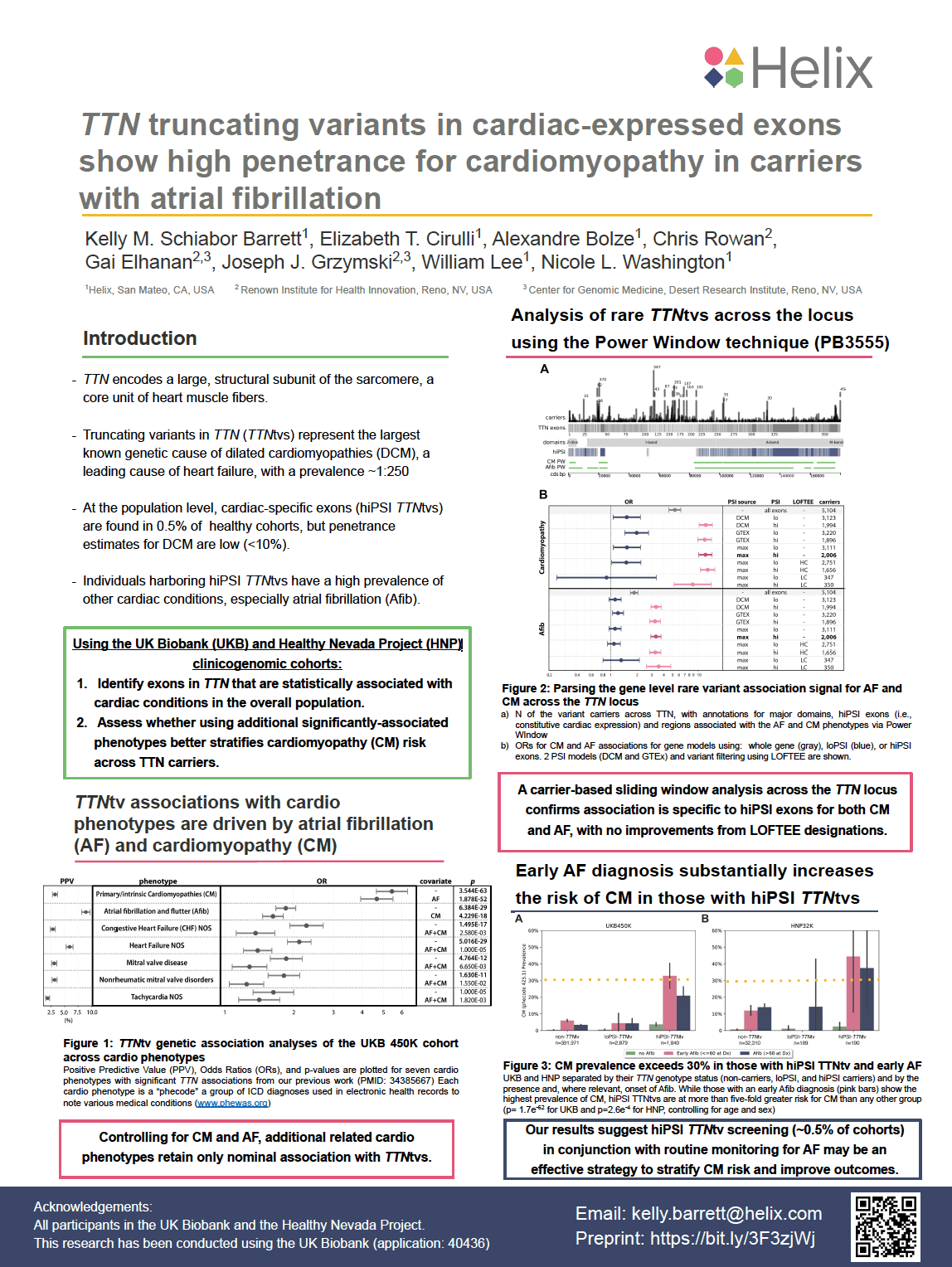
TTN truncating variants in cardiac-expressed exons show high penetrance for cardiomyopathy in carriers with atrial fibrillation
2. Individuals with GCK-MODY are not at increased risk for common complications associated with T2D
GCK is significantly associated with Type 2 Diabetes diagnosis, although GCK-MODY individuals typically do not respond to insulin and may not actually require treatment. This makes it a prime candidate gene to consider when expanding population genomics programs beyond CDC Tier 1 genes. In this poster, senior research scientist Natalie Telis presents an analysis that suggests diagnosis criteria may benefit from reconsideration in GCK carriers.
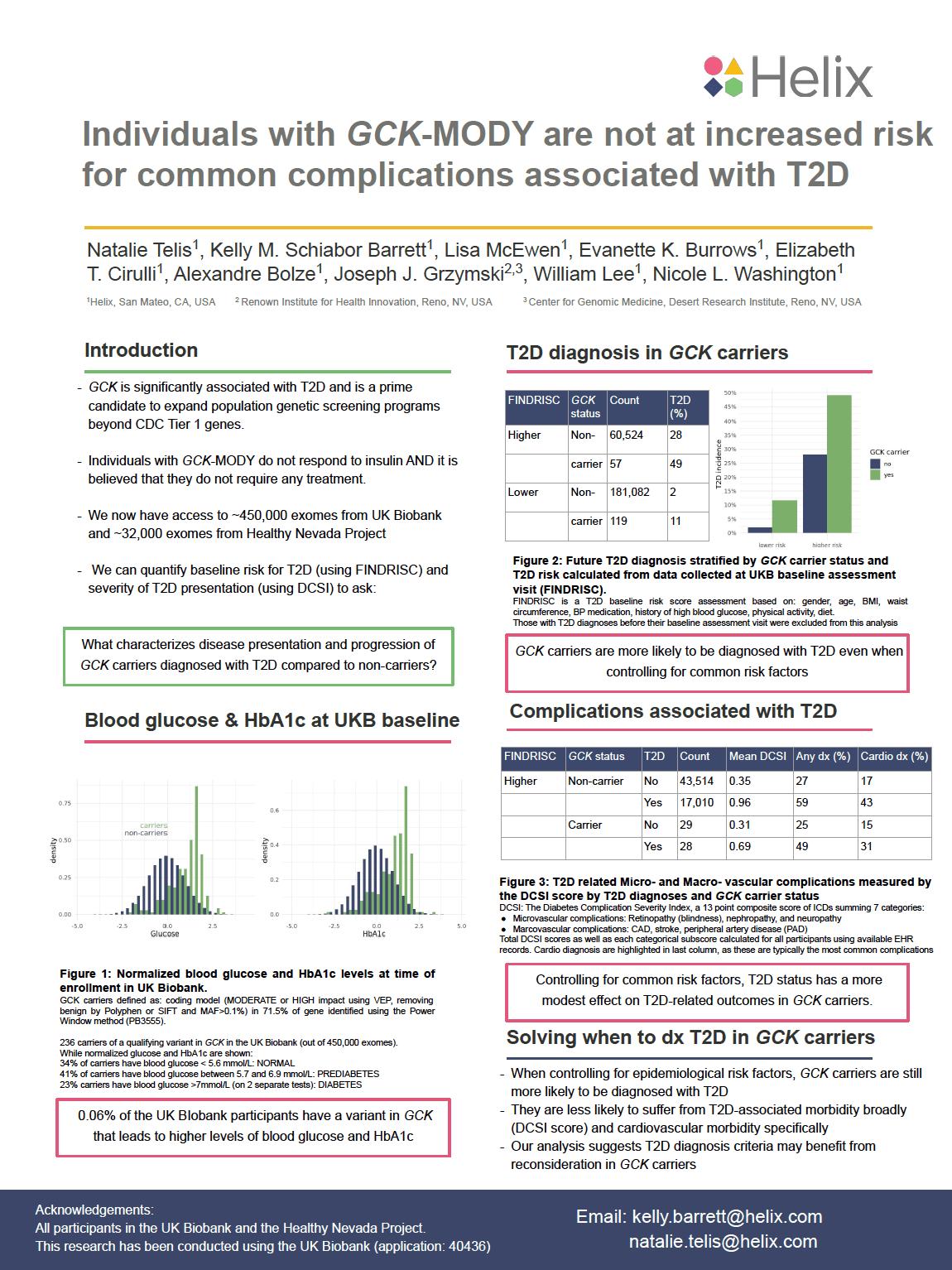
Individuals with GCK-MODY are not at increased risk for common complications associated with T2D
3. Genetics of vaccine side-effects
Associate Director of Research Liz Cirulli presented her publication on the first pharmacogenomics study on reactions following COVID-19 vaccination. The study showed individuals with the HLA-A*03:01 allele who received the Pfizer vaccine are approximately twice as likely to have severe or extreme difficulties than those without the allele. At a min, this is useful for educating and preparing anxious vaccine recipients. Additionally, the more we understand about these genetic associations, the more vaccine manufacturers can potentially incorporate and attempt to mitigate these types of reactions into their development process. Read our short blog on the analysis here.
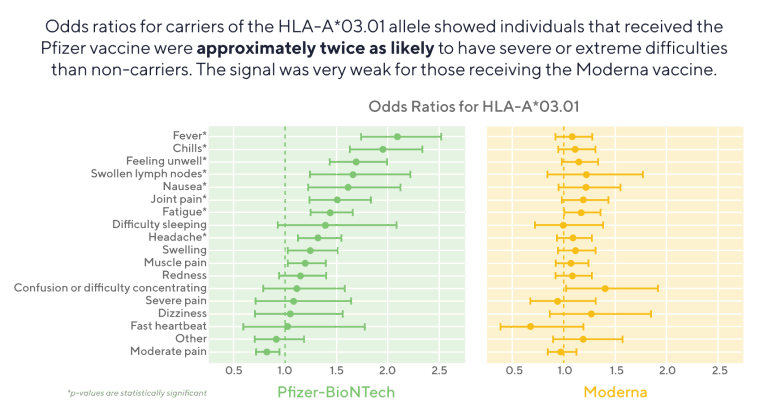
The study identified that participants with the HLA-A*03:01 allele who received the Pfizer-BioNTech (Pfizer) vaccine are approximately twice as likely to have severe or extreme difficulties after receiving the vaccine (defined as reactions that would severely interfere with daily routine like fever and chills), than those without the allele.
4. Combining breast cancer PRS & genes of intermediate penetrance improves risk stratification in the Healthy Nevada Project
Cancer risk assessment is not consistently offered and can lead to inequity in care. Helix has shown that population-based genetic screening programs can be used to reduce these inequities. In this poster, Helix senior scientist Alex Bolze shows that combining breast cancer polygenic risk score (PRS) and genes of intermediate penetrance can improve risk stratification even further.
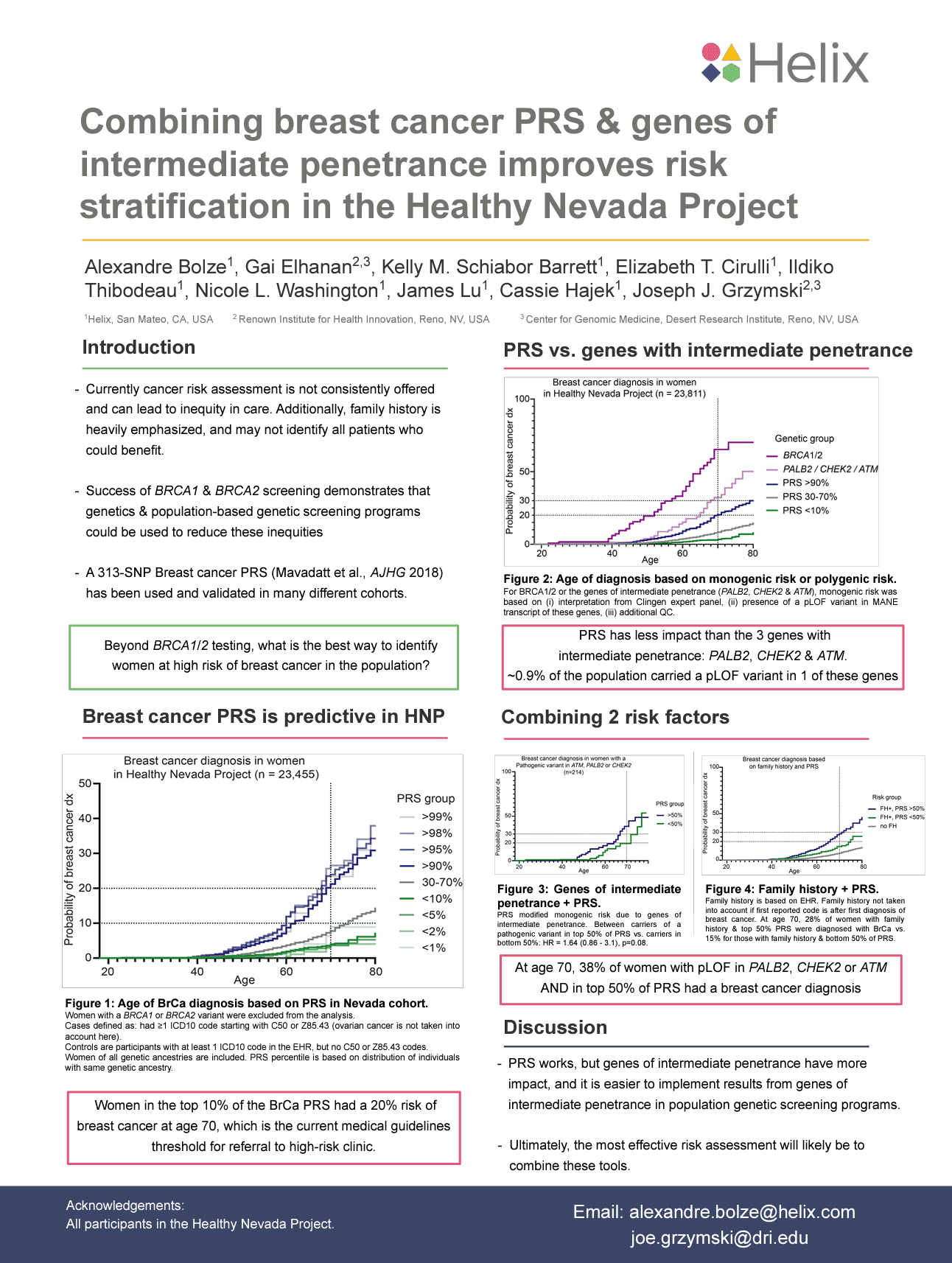
Combining breast cancer PRS & genes of intermediate penetrance improves risk stratification in the Healthy Nevada Project.
5. Power Window: a power-based sliding window method to identify the rare and novel variants underlying gene-based association signals
It’s been difficult to determine whether or not a rare mutation in a gene actually has a clinical impact, even if it is well-known that the gene and the disease have a clear relationship. In this poster, Liz Cirulli shares our patent-pending Power Window method, which improves the ability to evaluate clinical impact.
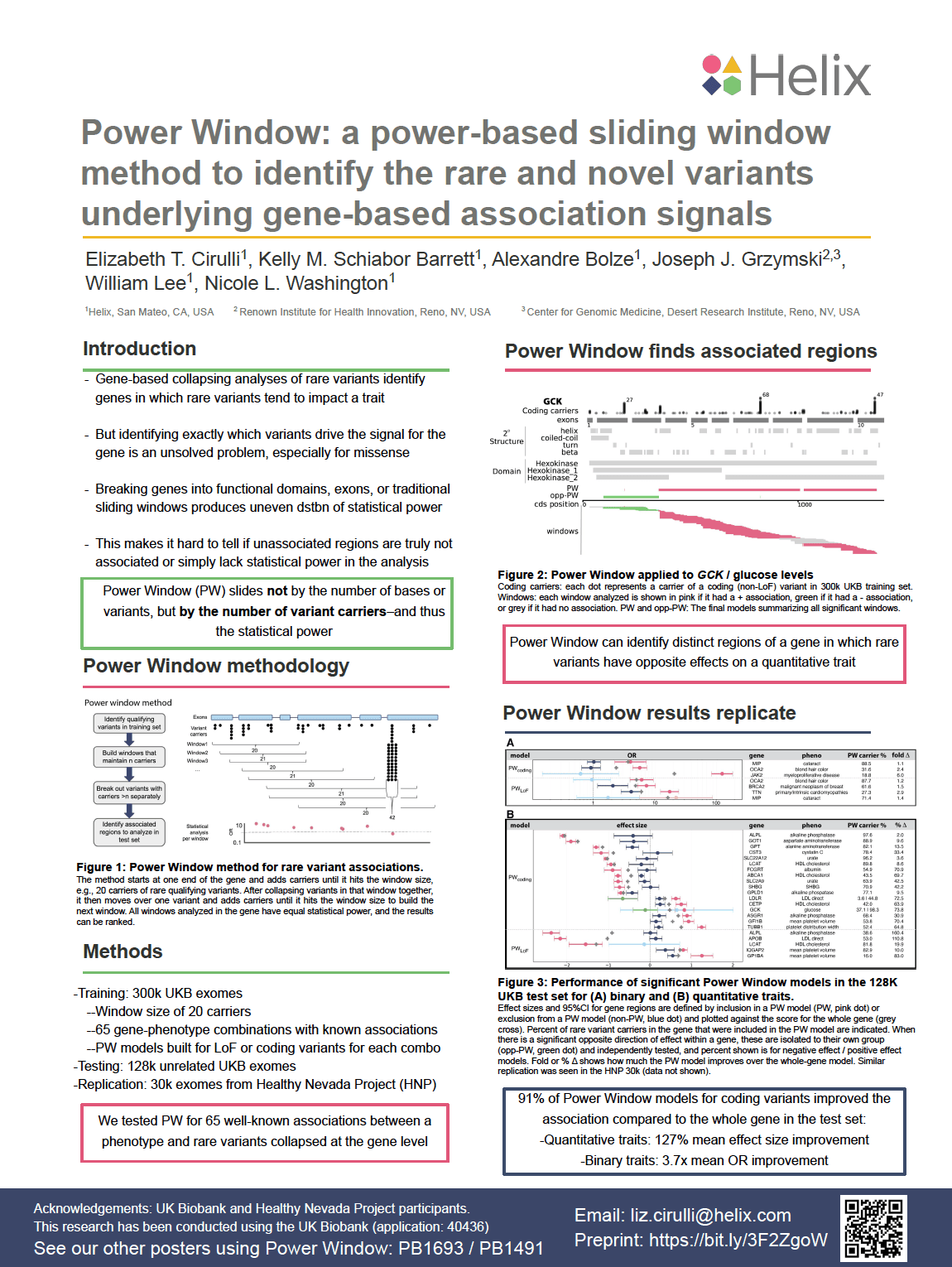
Power Window: a power-based sliding window method to identify the rare and novel variants underlying gene-based association signals.